Loading
The Neuroscience Chronicles
ISSN: 2767-3405
All Articles
The role of aromatic stacking in drug-drug interactions
Amina S Woods
Having studied and worked in the fields of pharmacology and structural biology my first reaction to reading an article or attending a lecture about a class of chemical compounds or biomolecules regardless of whether they are nucleotides, proteins or lipids is to look up their structure or sequence, as the chemical structure of molecules is what defines their character, that is their mechanism of action. Most cancer therapeutic agents such as Taxol (paclitaxel) which is widely used to target solid tumors are rich in aromatic structures. These patients are often depressed and are on psychotropic medications, which also contain two or more aromatics. It is unknown whether these two groups of compounds directly interact.
Neurosci Chron, 2022, Volume Volume 3, Issue Issue 1, p1-2 | DOI: 10.46439/Neuroscience.3.016
Role of Ginseng in therapeutic management of Alzheimer’s Disease
Rudrarup Bhattacharjee, Amarendranath Choudhury
While much of research progress has been achieved in last century on Alzheimer’s Disease (AD), the conclusive therapy for the same is still unachieved. Several lines of therapeutic regimes have been introduced, which basically act on slowing down the disease progression.
Neurosci Chron, 2020, Volume Volume 1, Issue Issue 1, p1-3 | DOI: 10.46439/Neuroscience.1.001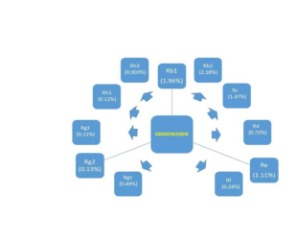
Effect of educational level on Alzheimer's disease-related biomarkers: Commentary
Hongyu Yang, Yue Wu, Zaohuo Cheng, Shouquan Gu
Alzheimer’s disease (AD) is a progressive neurodegenerative disorder characterized by cognitive impairments that might be accompanied by declines in activities of daily living, neuropsychiatric disorders and a loss of motor function [1,2]. At present, the prevalence of dementia of Alzheimer’s type (DAT) is approximately 4% among elderly people [3]. With the increase in the aging the population, the number of individuals with DAT is still increasing.
Neurosci Chron, 2021, Volume Volume 2, Issue Issue 1, p1-3 | DOI: 10.46439/Neuroscience.2.006
Mathematical proof of the equivalence between the HLbC model of consciousness and Bayesian inference in neural information processing
Shinichi Inage, Hana Hebishima
This paper presents a mathematical proof of the equivalence between the Human Language-based Consciousness (HLbC) model and Bayesian inference, exploring their connection within neural information processing. The HLbC model posits that consciousness emerges through a process involving the observation of external events, the matching of those events to past memories, unconscious action selection, and post-hoc recognition of actions as conscious decisions.
Neurosci Chron, 2025, Volume Volume 5, Issue Issue 1, p1-8 | DOI: 10.46439/Neuroscience.5.026
Interpretation and modelling of the brain and the split-brain using the HLbC (Human Language based Consciousness) model
Mina Arakaki, Hana Hebishima, Shinichi Inage
The HLbC model, as proposed by the author, has been utilized to interpret the varied behaviors manifested by individuals with split-brains. This paper initially provides a succinct overview of the function of the corpus callosum, pivotal to discussions concerning split-brains, along with the distinctive behaviors demonstrated by subjects with split-brains. Subsequently, it elucidates the application of the HLbC model in interpreting the behavior of such individuals. Comparative analyses with normal brain function are then conducted.
Neurosci Chron, 2024, Volume Volume 4, Issue Issue 1, p1-14 | DOI: 10.46439/Neuroscience.4.019
- Abstract |
- Full Text |
- Cite |
- Supplementary File
Mg+2 ions mediate the interaction of intrinsically disordered nascent chains with the ribosome: implications for protein folding and aggregation in the early stages of protein life
Silvia Cavagnero, Valeria Guzman-Luna
During the last few decades, the ribosome has been regarded primarily as a major cell player devoted to the catalysis of protein biosynthesis during translation [1-5]. It is therefore not surprising that several processes related to translation exploit the ribosome as a central hub. For instance, it is well-known that many events related to translational regulation are mediated by interactions between the ribosome and initiation, elongation or termination factors [6-9]. In addition, the ribosome is involved in mRNA-code recognition and proofreading [10-12] as well as in the control of translation rates via interactions with mRNA codons bearing high- and low-frequency [13-15] and associated with variable tRNA abundance within the translation machinery [16-18].
Neurosci Chron, 2022, Volume Volume 3, Issue Issue 1, p3-5 | DOI: 10.46439/Neuroscience.3.017
Association of COVID-19 coronavirus and Kawasaki syndrome like features in 1-5 years old children
Bittmann S, Weissenstein A, Villalon G, Elena Moschüring-Alieva, Luchter E
In the nightmare of the coronavirus pandemic that is spreading around the world, parents could take comfort in one thing - early reports that the virus mysteriously spares children, even though this often leads to critical illness in older people. An article published in the Journal “Pediatrics”, based on 2,143 young people in China, provides the most comprehensive evidence of the spread of the virus among children, and there is bad news and good news [1].
Neurosci Chron, 2020, Volume Volume 1, Issue Issue 1, p4-5 | DOI: 10.46439/Neuroscience.1.002
Inhibition of 11β-HSD1, a key enzyme in the stress management, improves cognition by RL-118 drug treatment
Puigoriol-Illamola D, Vázquez S, Griñán-Ferré C, Pallàs M
In recent years, stress and stress-coping mechanisms constitute a growing public healthcare issue concerning modern society. Experiencing stress engenders a great complex mechanism named stress response, which consists of a rapid release of catecholamines by the sympathetic nervous system, followed by a slower response in which hormones, mainly glucocorticoids (GCs), are synthesized and released to the bloodstream.
Neurosci Chron, 2021, Volume Volume 2, Issue Issue 1, p4-8 | DOI: 10.46439/Neuroscience.2.007
Parkinson’s disease: cell therapy vs. gene therapy
Ashok Chakraborty, Anil Diwan
Parkinson’s disease (PD) is the second most common neurodegenerative disease, manifesting as a characteristic movement disorder with a number of additional non-motor features. The pathological hallmark of PD is the presence of intra-neuronal aggregates of a-synuclein (Lewy bodies). The movement disorder of PD occurs largely due to loss of dopaminergic neurons of the substantia nigra, resulting in striatal dopamine depletion.
Neurosci Chron, 2020, Volume Volume 1, Issue Issue 1, p6-10 | DOI: 10.46439/Neuroscience.1.003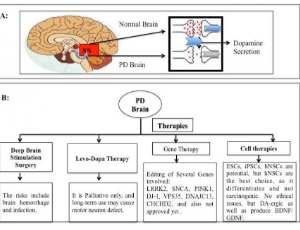
Omics analysis of uveal melanoma: Leukocyte gene signatures reveal novel survival distinctions and indicate a prognostic role for cytolytic activity scoring
Michael J Diaz, Angela Fadil, Giona Kleinberg, Kevin T Root, Lauren Ladehof, Sai Batchu, Brandon Lucke-Wold
The significant metastatic potential of uveal melanoma (UVM) lends to high mortality. Even with successful local tumor treatment, many patients will develop metastatic disease. The present study aims to elucidate the relationship between tumor-infiltrating immune cell (TIIC) diversity and survival to identify potential therapeutic targets and improve UVM prognosis.
Neurosci Chron, 2022, Volume Volume 3, Issue Issue 1, p6-11 | DOI: 10.46439/Neuroscience.3.018
A commentary on telehealth and telemedicine in the COVID-19 era: A world of opportunities for the neurosurgeon
A. H. M. Ataullah, Sabrina Rahman, Md Nazmul Huda Ridoy, Nilyufar Turaeva, Ivan David Lozada-Martinez, Luis Rafael Moscote-Salazar, Md Moshiur Rahman
The COVID-19 pandemic has produced unprecedented conditions and difficulties for the global delivery of healthcare services. In this situation, all the healthcare employees, including neurosurgeons are facing many complexities. Telemedicine has decreased the spread of infection between neurosurgeons and patients.
Neurosci Chron, 2021, Volume Volume 2, Issue Issue 1, p9-10 | DOI: 10.46439/Neuroscience.2.008
A comprehensive metric for consciousness strength: Integrating real-time responsiveness and long-term learning based on the HLbC model
Shinichi Inage, Hana Hebishima
This paper presents a novel framework for measuring consciousness strength based on the Human Language-based Consciousness (HLbC) model. While Integrated Information Theory (IIT) quantifies consciousness via integrated information, the HLbC model views consciousness as a post-hoc process, emphasizing language and probabilistic decision-making.
Neurosci Chron, 2025, Volume Volume 5, Issue Issue 1, p9-15 | DOI: 10.46439/Neuroscience.5.027
MicroRNA silencing: A promising therapy for Alzheimer’s disease
Neelima B. Chauhan
Alzheimer’s disease (AD) is a global health crisis currently afflicting ~6 million Americans (and ~40 million people worldwide). By the middle of the century, these numbers will stagger by ~16 million Americans (and ~152 million people worldwide) suffering from AD, if breakthrough disease-modifying treatments are not discovered.
Neurosci Chron, 2020, Volume Volume 1, Issue Issue 1, p11-15 | DOI: 10.46439/Neuroscience.1.004
Propriospinal neurons involved in coordination of the bladder and urethra
Sergei Karnup
Storage and periodic elimination of urine requires coordinated activity of the bladder and the urethral outlet. This coordination is provided by a complex neural control system in the brain and spinal cord. Experimental studies in animals show that urine storage is modulated by reflex mechanisms located in the sacral spinal cord, whereas urine release is mediated by pontine micturition center in the brainstem.
Neurosci Chron, 2021, Volume Volume 2, Issue Issue 1, p11-18 | DOI: 10.46439/Neuroscience.2.009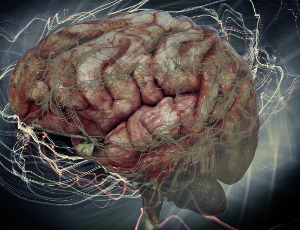
Mathematical modeling of consciousness based on the human language- An interpreting measurement problem in quantum mechanics
Hana Hebishima, Shinichi Inage
This paper discusses the interpretation of the measurement problem and Qbism in quantum mechanics using the Human Language based Consciousness (HLbC) model proposed by the author. The HLbC model holds that consciousness is generated from physical processes only. It adopts the position that consciousness is generated from physical processes only.
Neurosci Chron, 2024, Volume Volume 4, Issue Issue 1, p15-20 | DOI: 10.46439/Neuroscience.4.020
Overcrowding modulates the response of adolescents to psychoactive drugs
Michael K. Ibrahim, Fatma M. Sabry, M. Raouf Hamed
Overcrowding is a growing problem that prevails in the urban areas of both developing and developed countries. It is considered as psycho-social stress that affects the behavior and physiology of individuals and societies [1].
Scientific awareness of overcrowding stress systematically started in the 1960s with the early experiments of John B. Calhoun using the so-called “rat utopia” and the theory of “behavioral sink” [2]. Depending on Calhoun’s experiments, connections between the model of rodent colonies and the arising problems of crowded cities were extrapolated [3].

A novel musical neurofeedback
Neelima Chauhan
A systematic analysis of Global Burden of Diseases (GBD) documented by the World Health Organization (WHO) now includes alarming prevalence of neurological diseases (NDs) as the foremost leading cause of death and disability worldwide. Given limited effectiveness of current symptomatic management of NDs, clinical implementation of alternative therapies is gaining increasing recognition as the viable option(s) for treating NDs.
Neurosci Chron, Volume 5, Issue 1, p16-21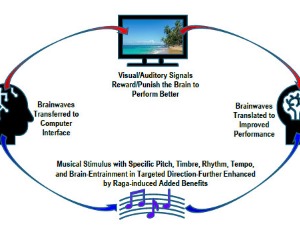
Investigating putative psychoactive compounds using planarians as an animal model using the environmental place conditioning protocol
Brady J. Phelps
There is a seemingly endless list of compounds used by humans that may have psychoactive reinforcing properties underlying their repeated use; many have never been adequately studied. In a 2019 paper, the potential reinforcing properties of cotinine, a major nicotine metabolite, were investigated for the first time. To pursue this line of inquiry, cotinine was assessed using the planarian as an animal model in environmental place conditioning (EPC) also known as conditioned place preference (CPP).
Neurosci Chron, 2021, Volume Volume 2, Issue Issue 1, p19-24 | DOI: 10.46439/Neuroscience.2.010
Unusual presentations of shunt malfunction - A commentary
Mehrdad Pahlevani, MD, Zohreh Habibi, MD, Mostafa EL Khashab, MD, PhD, Farideh Nejat, MD, MPH
Hydrocephalus is a life-threatening and chronic condition that can occur at any age, most often in the pediatric population. Cerebrospinal fluid diversion is necessary in dealing with most forms of hydrocephalus and ventriculoperitoneal shunt insertion is considered as one of the most commonly neurosurgical procedures for hydrocephalus management. Despite the effectiveness of shunt, it has been associated with a high rate of complications [1] including, infection, obstruction, disconnection, shunt fracture, migration of the catheters, and overdrainage.
Neurosci Chron, 2024, Volume Volume 4, Issue Issue 1, p21-23 | DOI: 10.46439/Neuroscience.4.021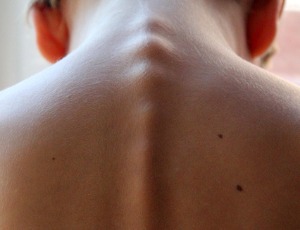
Sex differences in neuroplasticity and Alzheimer’s disease: A comprehensive review
Rayan Grira
Alzheimer’s disease (AD) is the leading cause of dementia, defined by amyloid plaques and neurofibrillary tangles. Yet, variability in disease onset and progression cannot be explained solely by pathology. Neuroplasticity, the brain’s ability to reorganize and adapt, is increasingly recognized as central to resilience in AD, with compelling evidence that it differs between sexes.
Neurosci Chron, Volume 5, Issue 1, p22-27
Modeling the origins of embodied minds through set theory
Shinichi Inage, Hana Hebishima
This paper explores the concept of consciousness from a mathematical perspective by using set theory. The individual minds of people can be represented as elements in a set, and the interaction between these sets of minds can be modeled using set operations.
Neurosci Chron, 2024, Volume Volume 4, Issue Issue 1, p24-26 | DOI: 10.46439/Neuroscience.4.022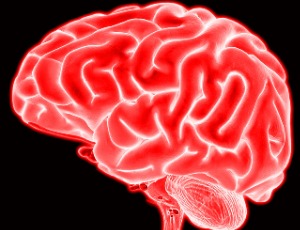
Artificial intelligence and the future of transfusion medicine
Cees Th. Smit Sibinga
Transfusion Medicine (TM) is a relatively young medical discipline supporting a large number of medical specialties on an almost daily basis. In de routine of TM large amounts of data are collected and processed in a standardized way and depending on the economy of scale practiced. Blood and its components are not without risk when transfused.
Neurosci Chron, 2021, Volume Volume 2, Issue Issue 2, p25-30 | DOI: 10.46439/Neuroscience.2.011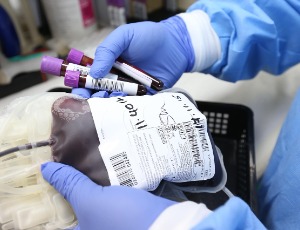
Dopamine receptors control feeding behavior in the silkworm Bombyx mori
Kanako Mitsumasu, Takuma Yoshikawa, Hiroto Ohta
We investigated the function and in vivo role of dopamine receptors (BmDopRs) in the silkworm Bombyx mori. During our studies, we discovered that BmDopRs play a crucial role in regulating feeding behavior in silkworm larvae. Here, we review recent findings [1] on the importance of dopamine (DA) and its receptors, particularly the BmDopR3 subtype, in regulating feeding behavior in Bombyx mori.
Neurosci Chron, 2024, Volume Volume 4, Issue Issue 1, p27-30 | DOI: 10.46439/Neuroscience.4.023
ALS Skeletal Muscle: Victim or Culprit
Agnes Badu-Mensah M.Sc, Xiufang Guo Ph. D., James J. Hickman Ph. D.
Aside its function in locomotion, posture maintenance and respiration, the hSKM is reported to be a critical metabolic regulator [1]. The hSKM is acknowledged as the primary site of glucose metabolism and storage [1]. Additionally, it serves as a reserve for amino acids [1,2]. In recently times, the hSKM has also been described as an endocrine organ.
Neurosci Chron, 2021, Volume Volume 2, Issue Issue 2, p31-33 | DOI: 10.46439/Neuroscience.2.012
Raga: The connecting link between psyche and soma
Neelima B. Chauhan, Mahesh Kale, Purva Gujar-Kale
The origin of Raga-the nucleus of Indian classical music (ICM)-dates back to the Vedic era with its identifiable roots in the Sama Veda [1,2]. The prototype monotonic Rig Veda recitation was originally developed to include only three notes i.e. a principal note, a higher note (Udatta), and a lower note (Anudatta) which was modified in the Yajur Veda to include a tetra chord with two principal notes and two accents.
Neurosci Chron, 2024, Volume Volume 4, Issue Issue 1, p31-35 | DOI: 10.46439/Neuroscience.4.024
Oligodendrocyte regulation of synaptogenesis may contribute to epilepsy development both in multiple sclerosis and polymicrogyria
Sheila Espírito Santo Araújo, Greice Nascimento Pires, Débora Magalhães Portela, Henrique Rocha Mendonca
CNS myelination is a well-known biological phenomenon related to increase in action potential conduction speed and synaptic integration. Demyelination or abnormal myelination has been related to seizures and epilepsy either in patients or animal models. Although its role in fastening action potential propagation has been confirmed, few additional biological functions of CNS myelin has been described.
Neurosci Chron, 2021, Volume Volume 2, Issue Issue 2, p34-36 | DOI: 10.46439/Neuroscience.2.013
Sensory gating protects sleep, sensory gaining protects the sleeper
Anton Coenen
Sleep is a vulnerable process for two reasons. Firstly, the comfort to sleep onset and maintenance is strenuous for many people, and secondly the diminished ability in sleep to monitor the environment reduces the action to risky and relevant events. The ease of sleep is regulated by a mechanism called ‘sensory gating’, controlling the amount of stimulus input to the brain. The monitoring of the sleep environment for external threats and situations is done by ‘sensory gaining’, a complex brain mechanism leading to a subconscious representation of the sleep environment, which makes reactions possible.
Neurosci Chron, 2024, Volume Volume 4, Issue Issue 1, p36-40 | DOI: 10.46439/Neuroscience.4.025
Attitudes toward people with epilepsy in Libya: The conundrum continues
Ashraf M. Rajab
A close and contemplative look at the published neurology literature makes it clear to the reader that epilepsy research possesses more popularity and occupies a higher position in the plethora of scholarly medical writings. Perhaps the reason behind this is that epilepsy nowadays has become more than just transient seizures that are treated with drugs to put an end to seizure recurrence, but rather it is a disease that permeates all aspects of the patient’s life.
Neurosci Chron, 2021, Volume Volume 2, Issue Issue 2, p37-38 | DOI: 10.46439/Neuroscience.2.014
The protective role of dimethyltryptamine and its analogues against ischemia-reperfusion injury: Commentary
Ede Frecska, Attila Kovacs
The article entitled “N,N-Dimethyltryptamine [DMT] attenuates spreading depolarization and restrains neurodegeneration by sigma-1 receptor activation in the ischemic rat brain” by Szabo et al. published recently in Neuropharmacology [1] is the last one in the series of studies on the potential benefits of DMT administration in different clinical forms of ischemia-reperfusion injury (IRI). The larger scope of the project – initiated and organized by Ede Frecska – is to collect support for a hypothesized biological function of this and related endogenous hallucinogen compounds such as 5-methoxy-N,N-dimethyltryptamine (5-MeO-DMT), 5-hydroxy-N,N-dimethyl-tryptamine (bufotenine) [2].
Neurosci Chron, 2021, Volume Volume 2, Issue Issue 2, p39-42 | DOI: 10.46439/Neuroscience.2.015
